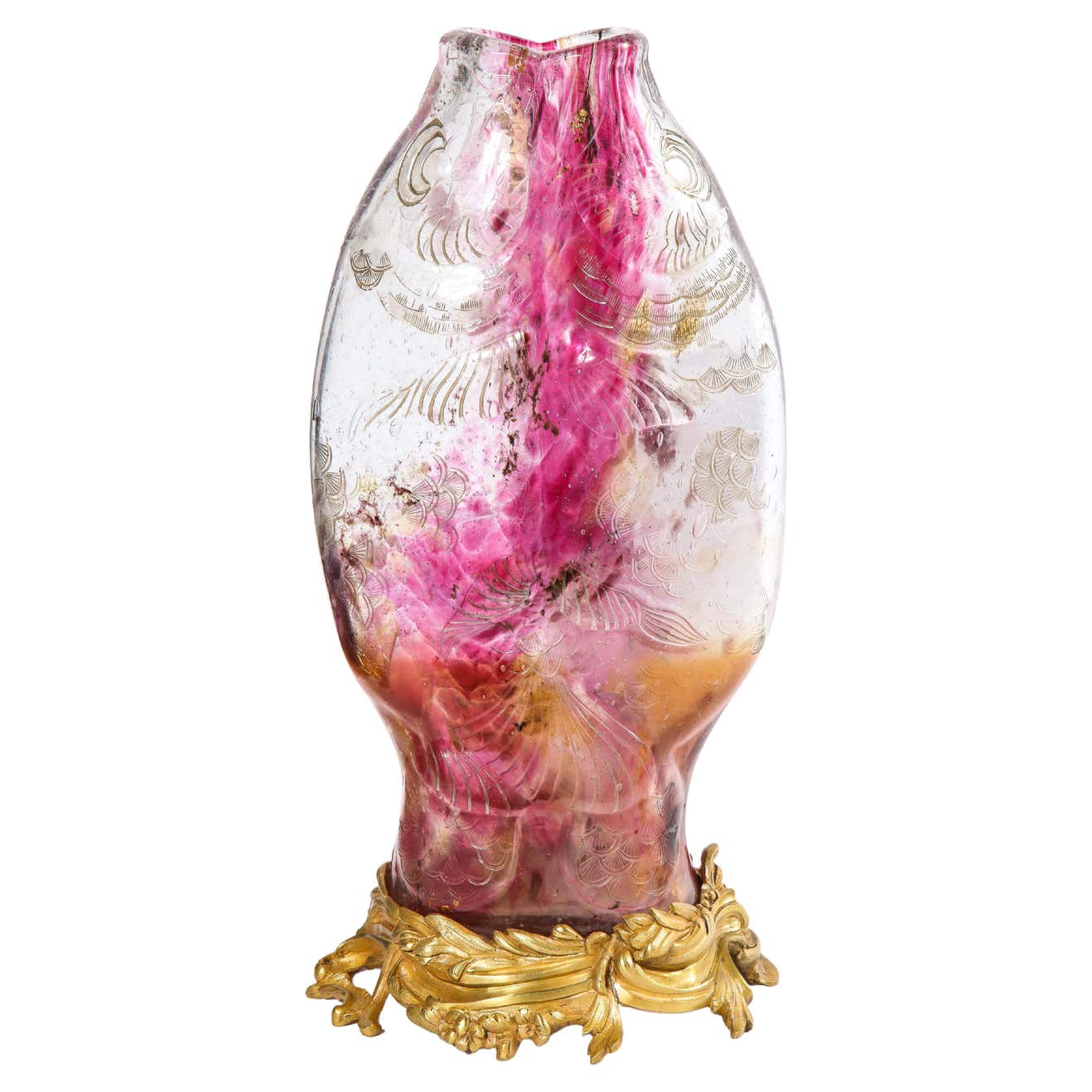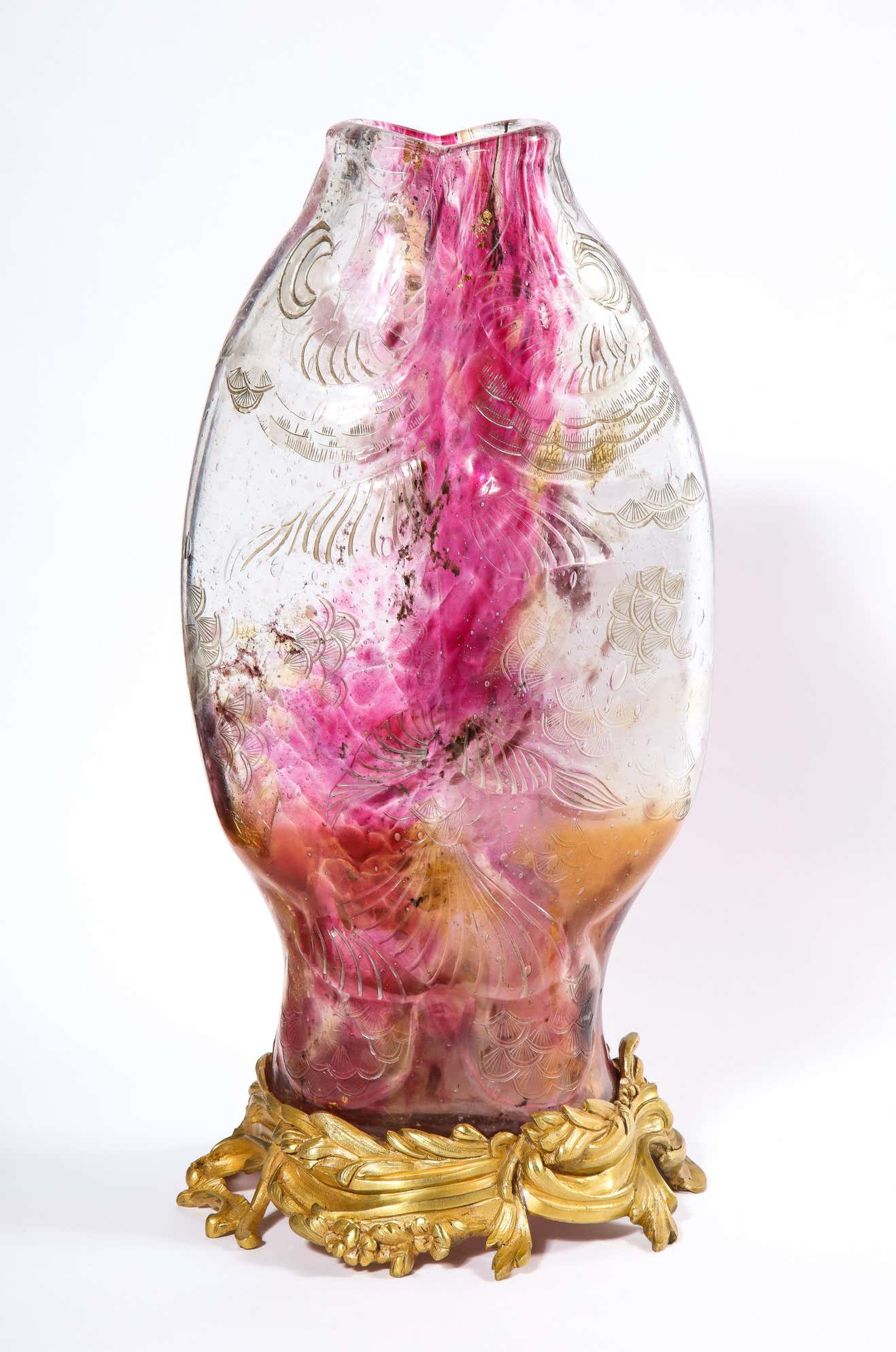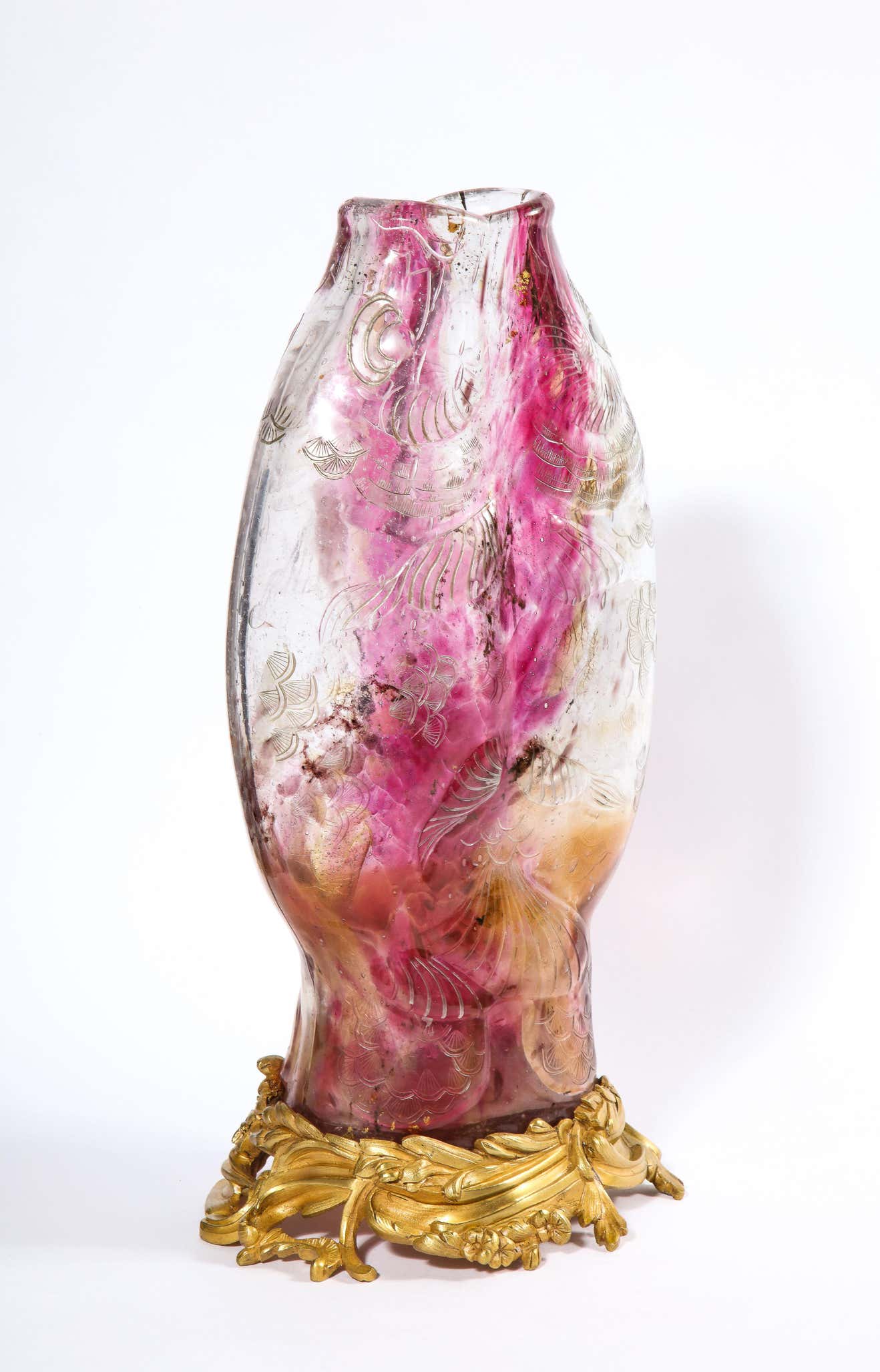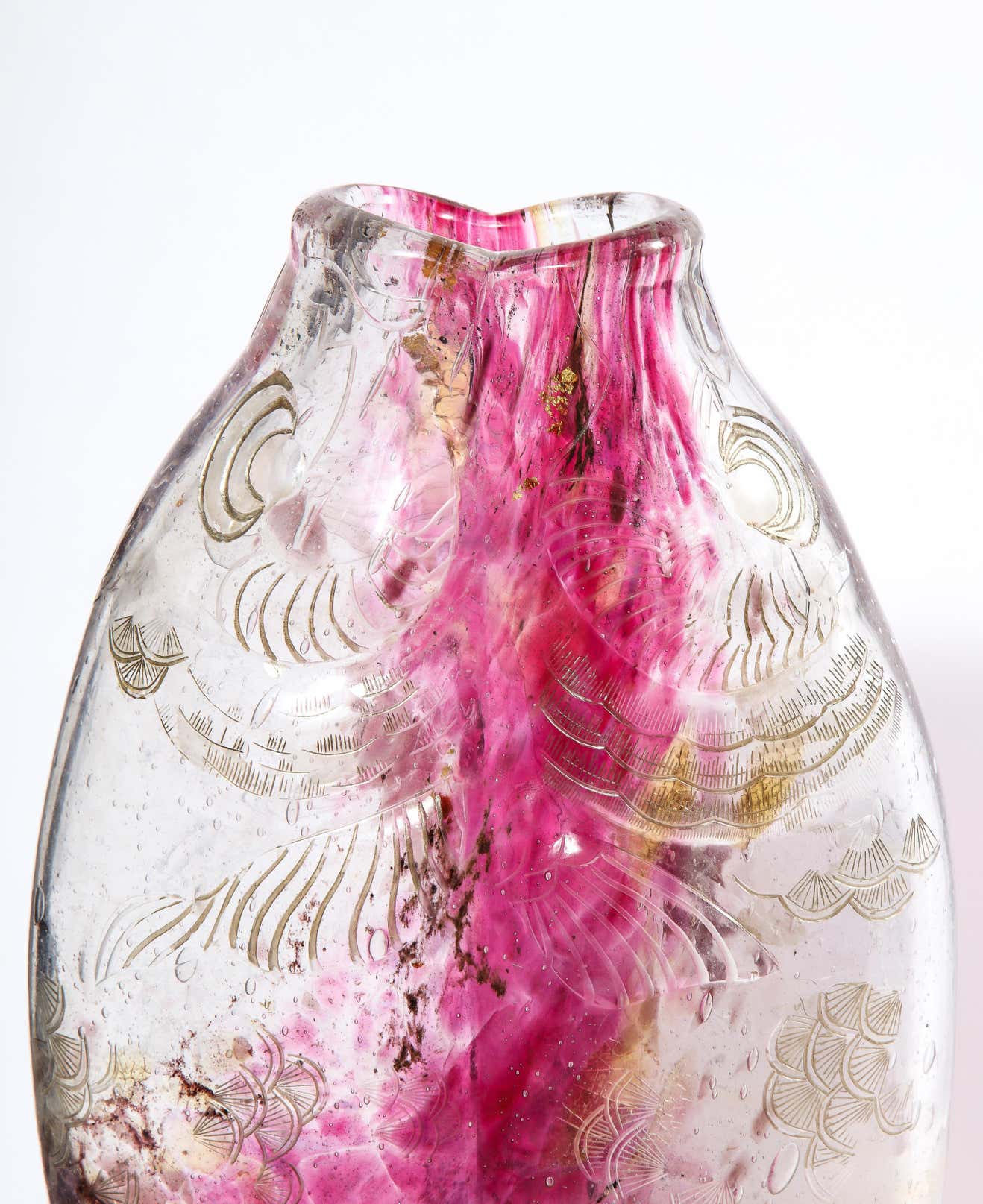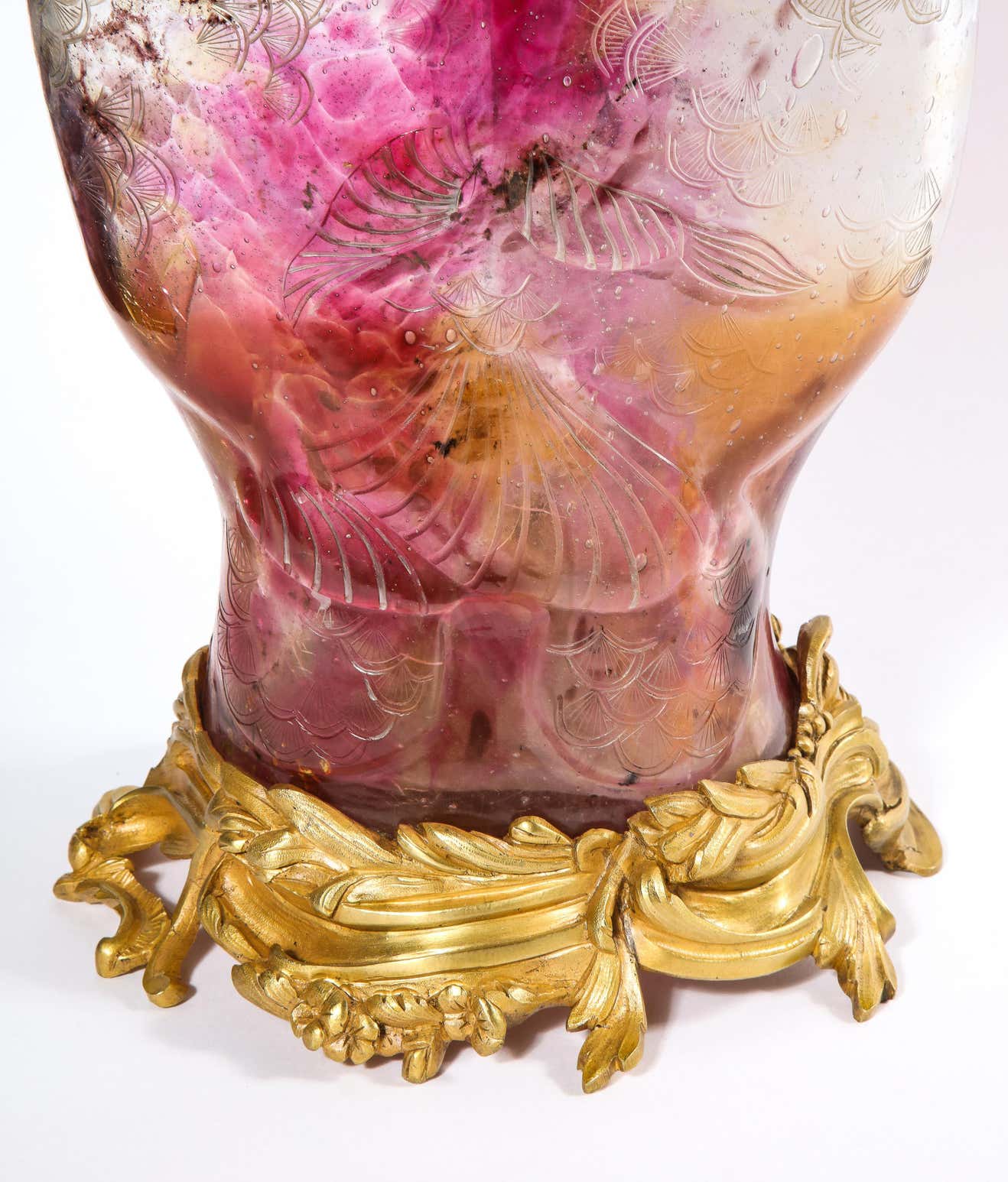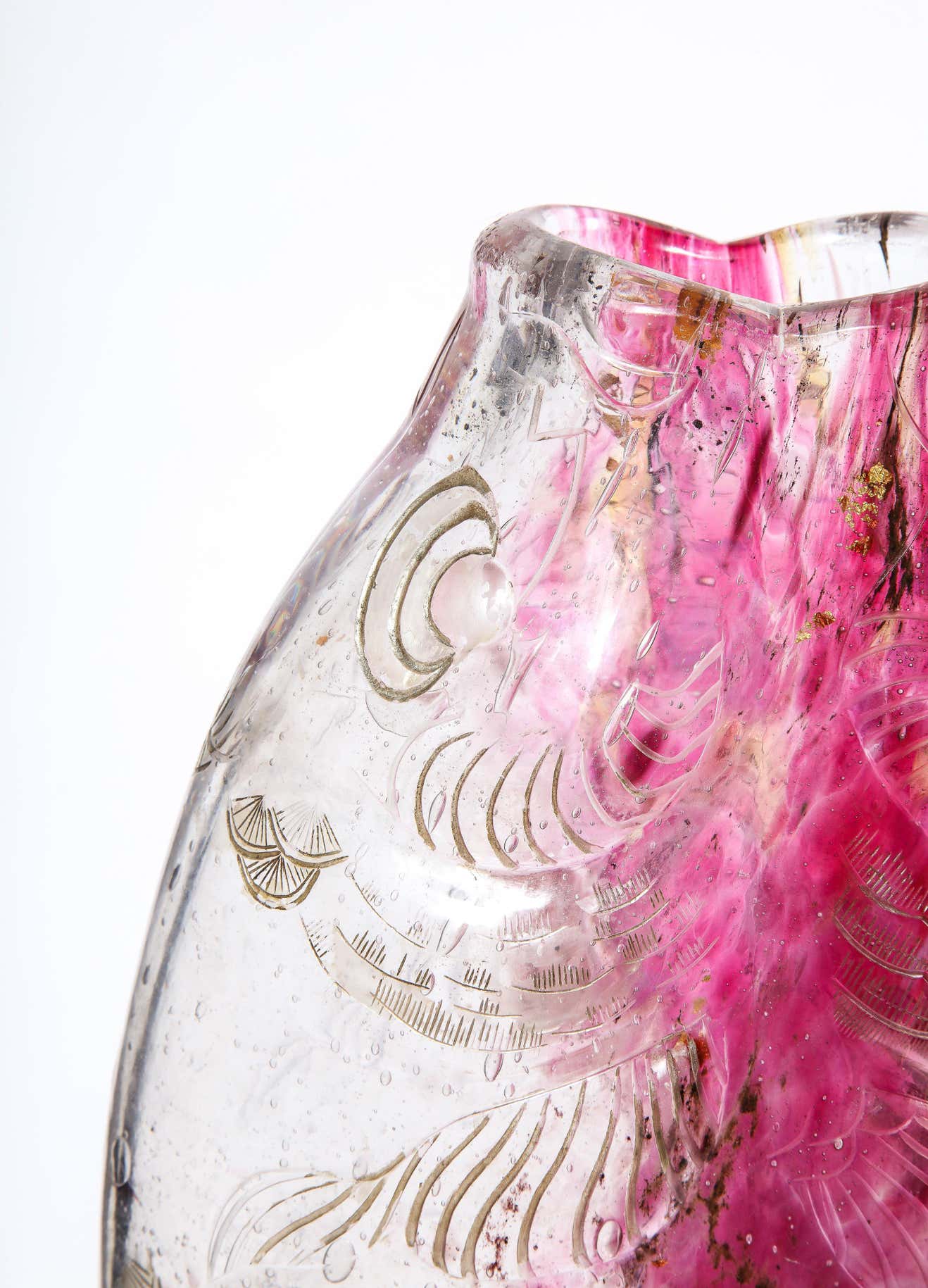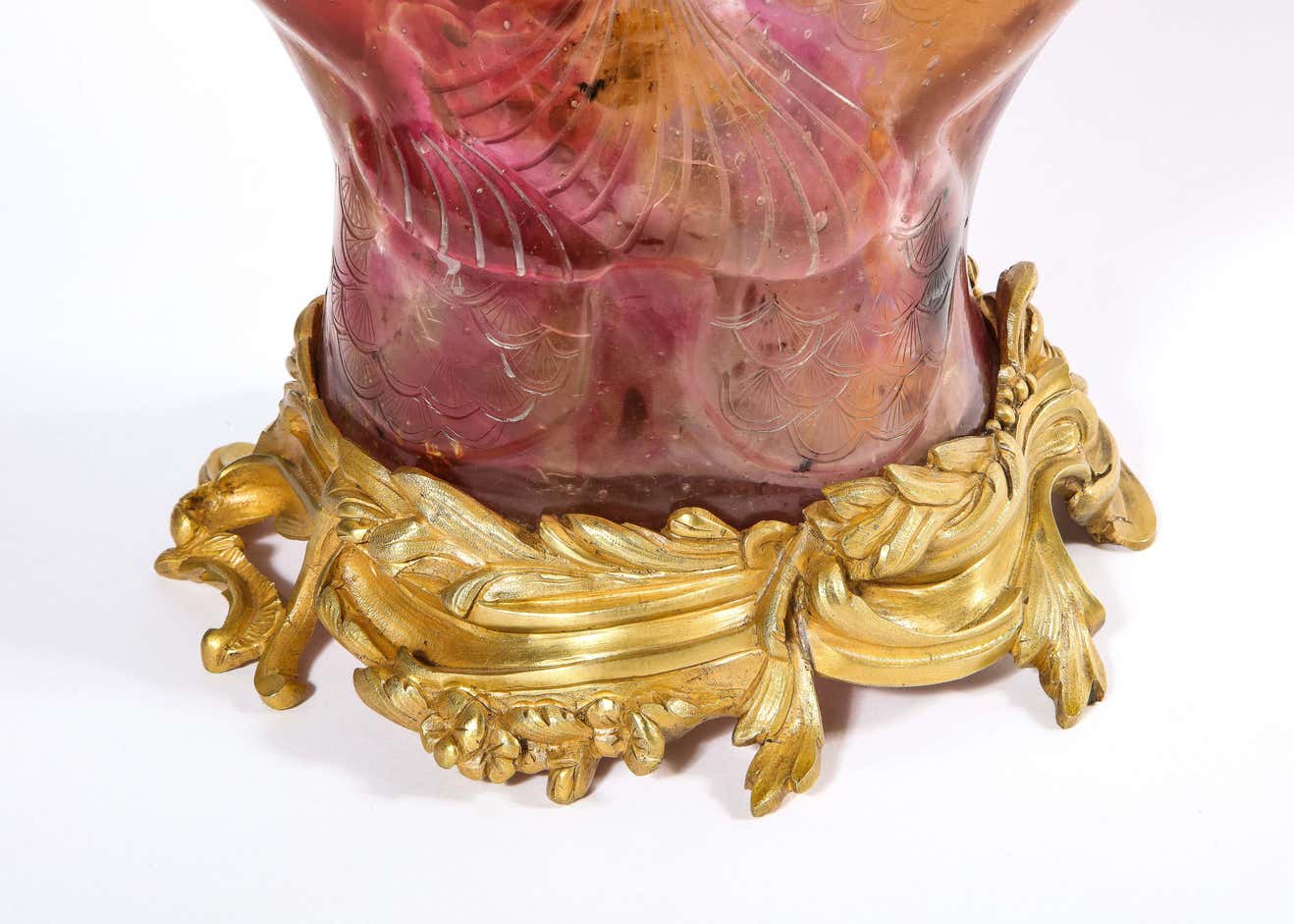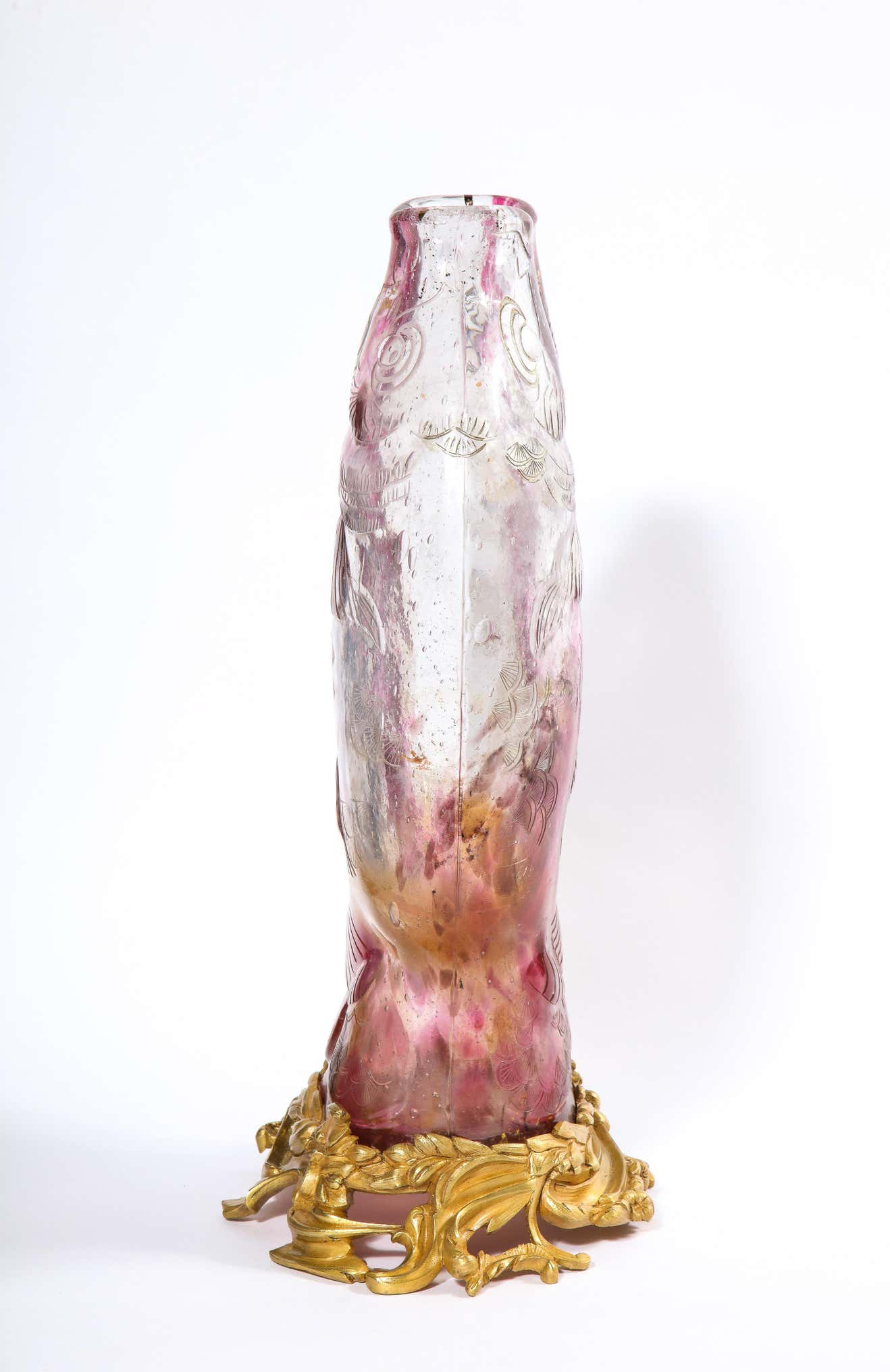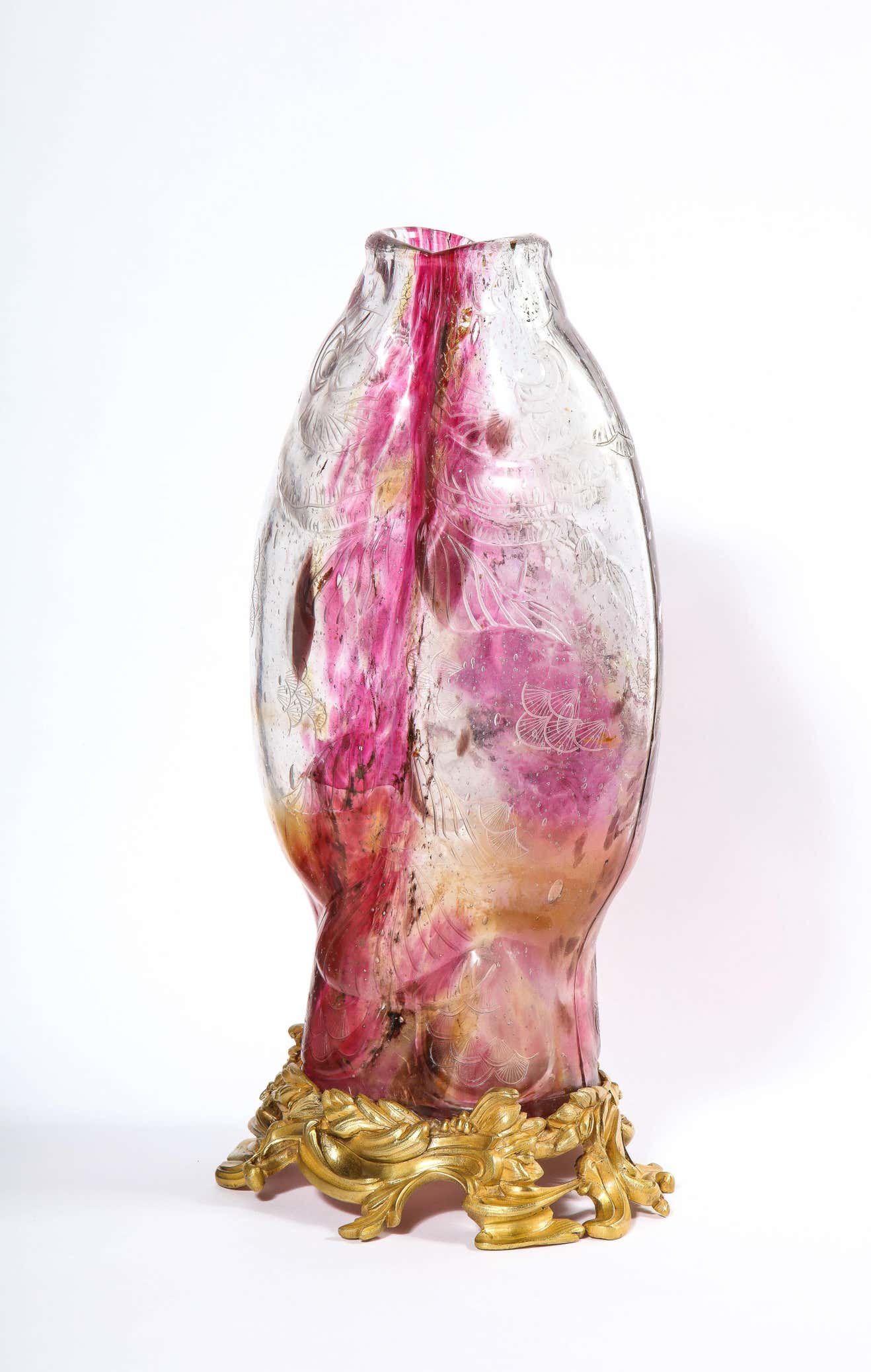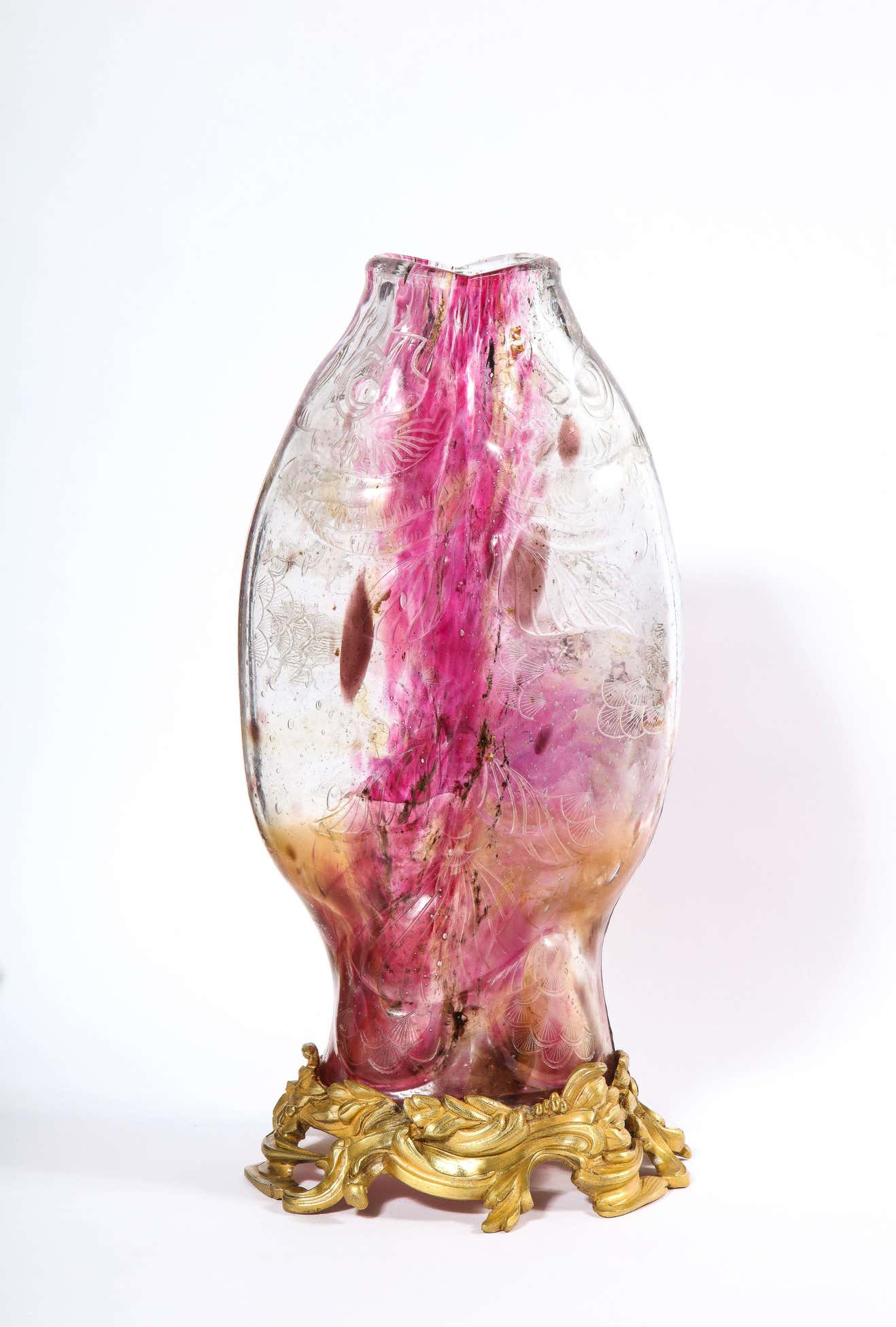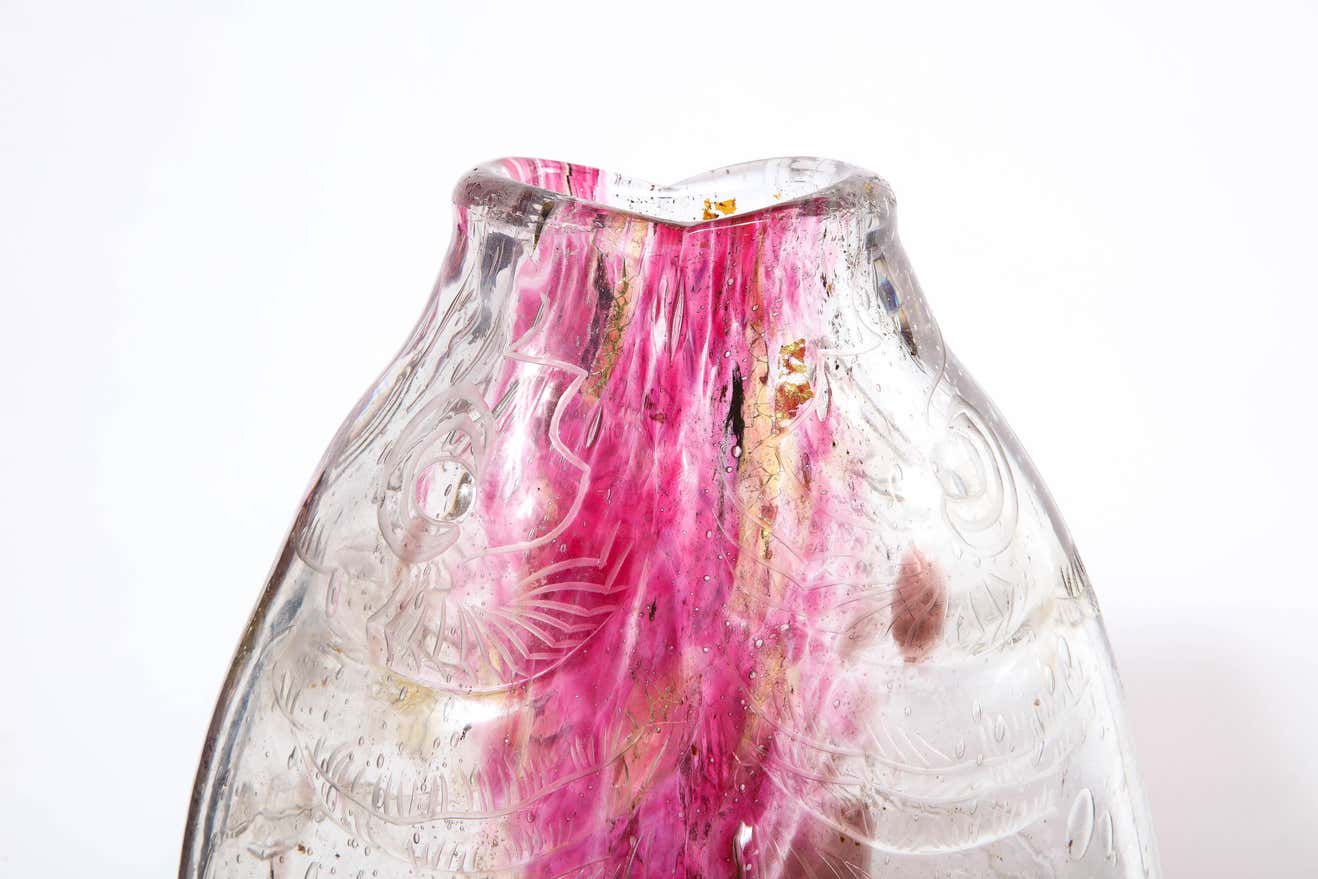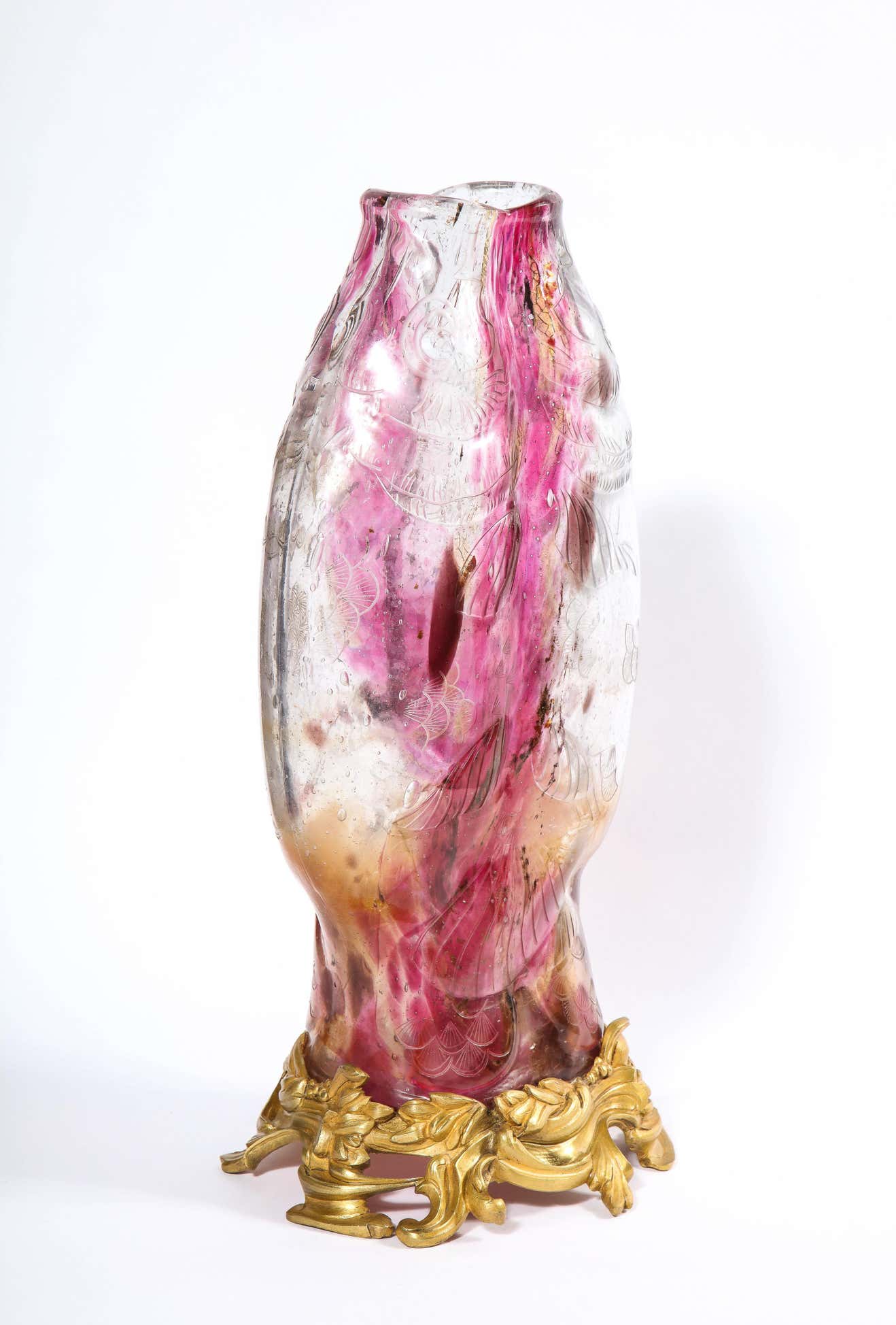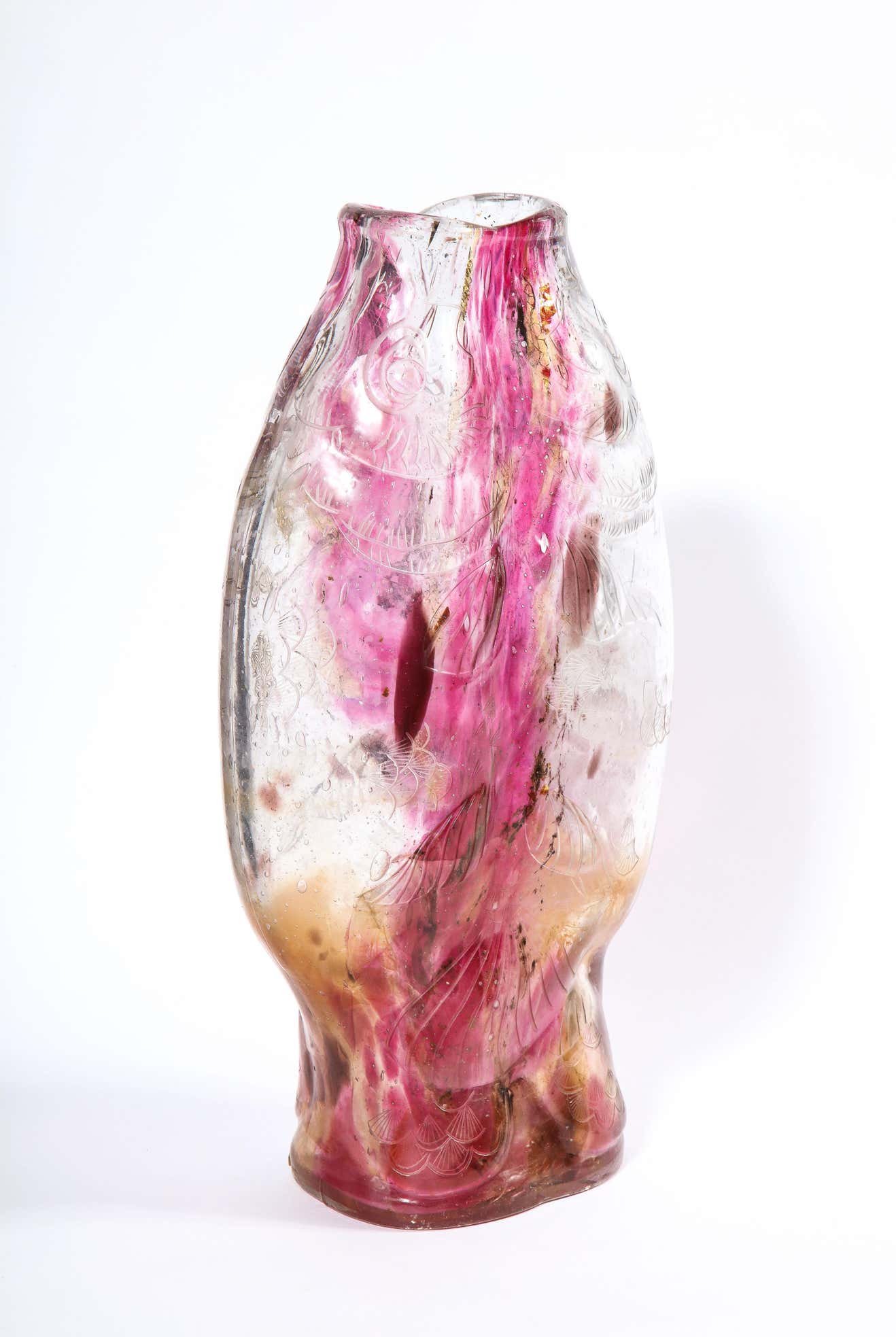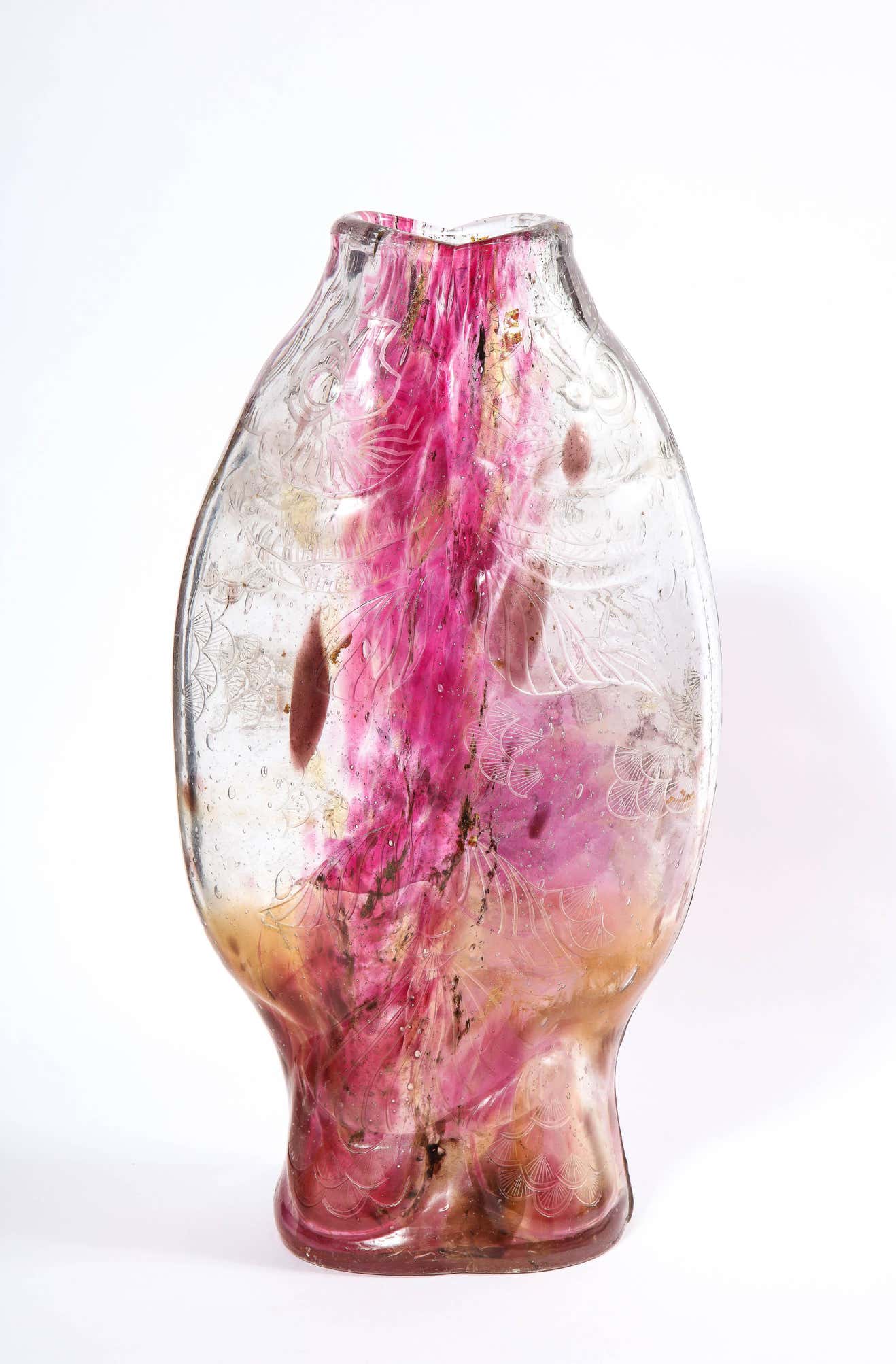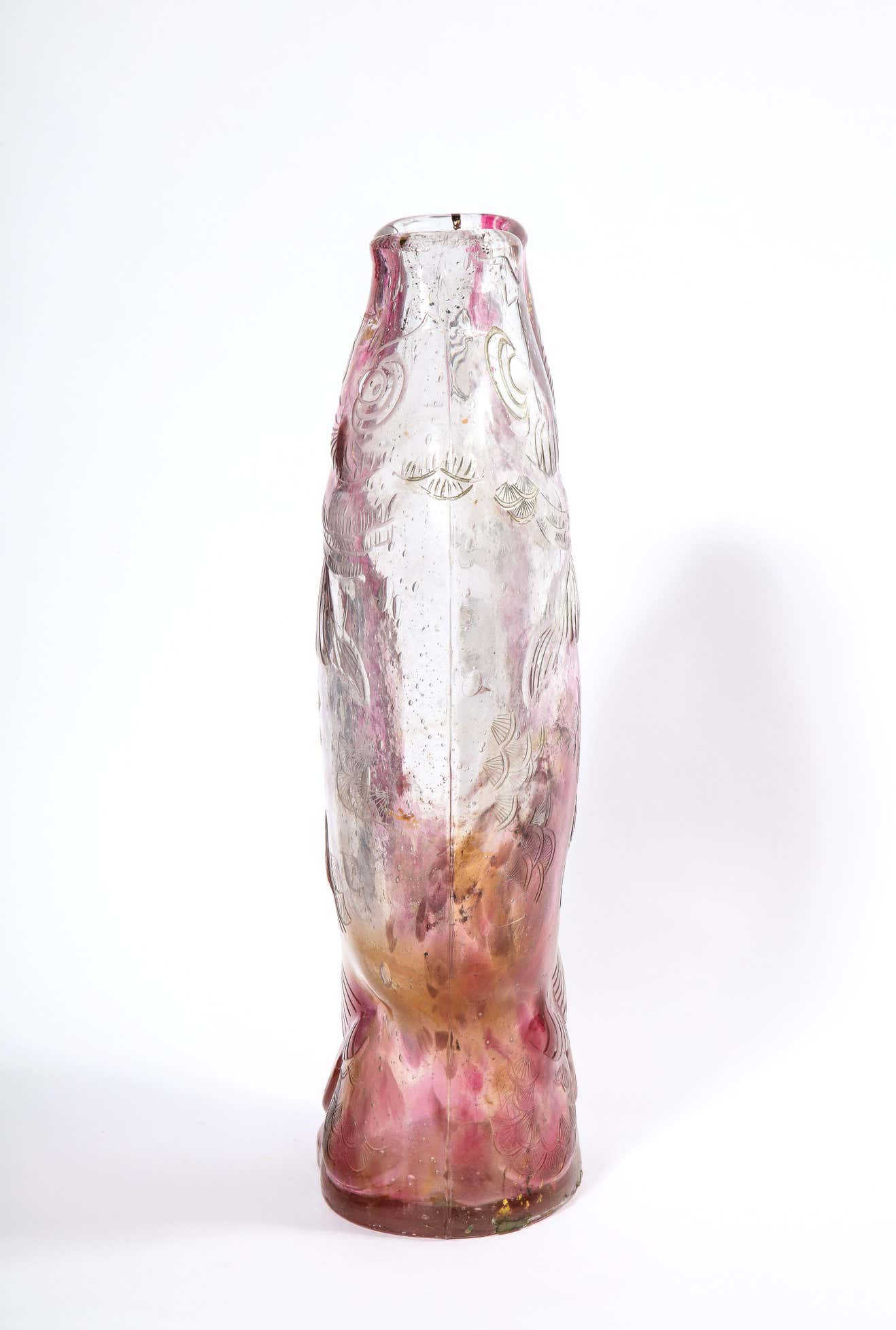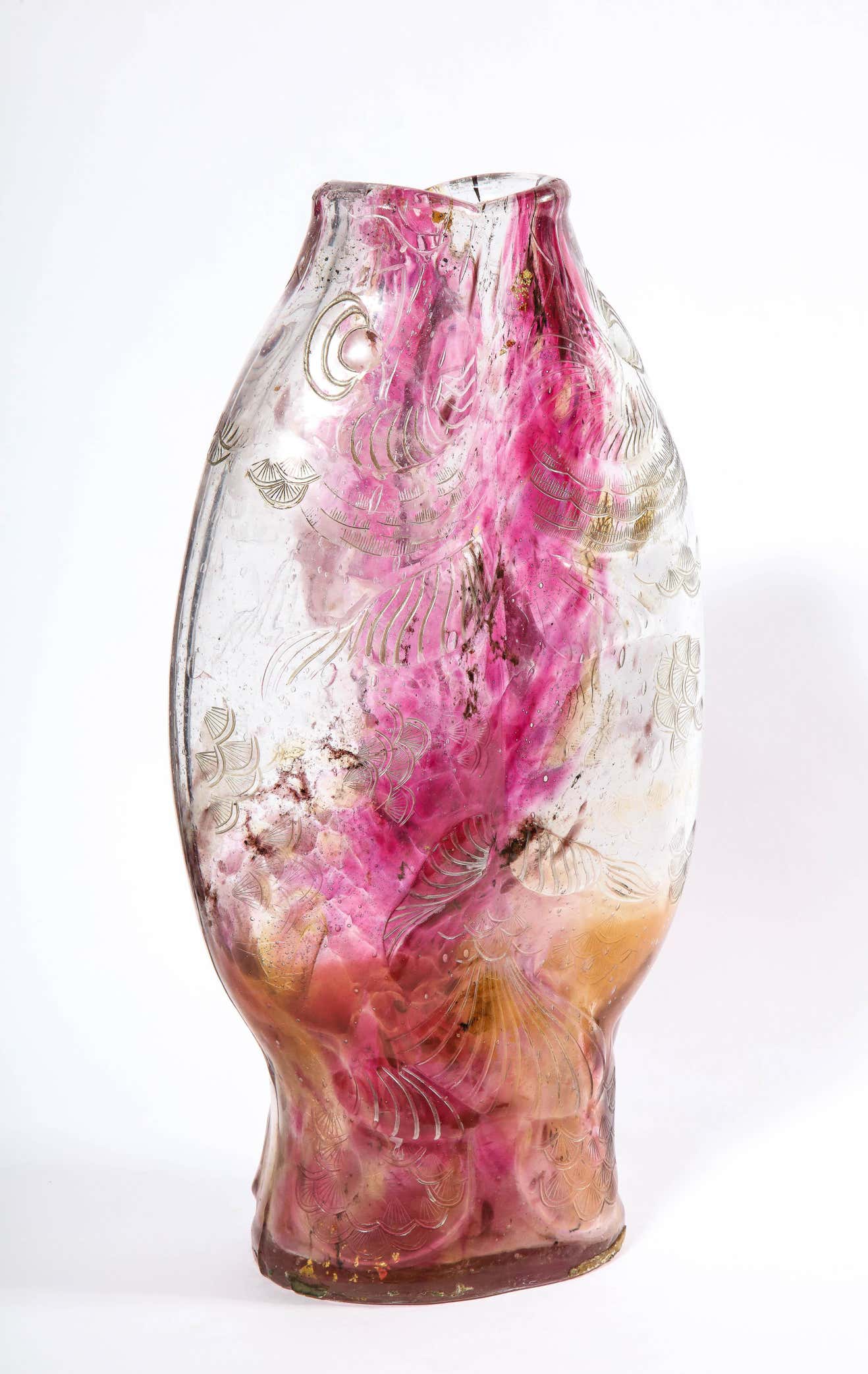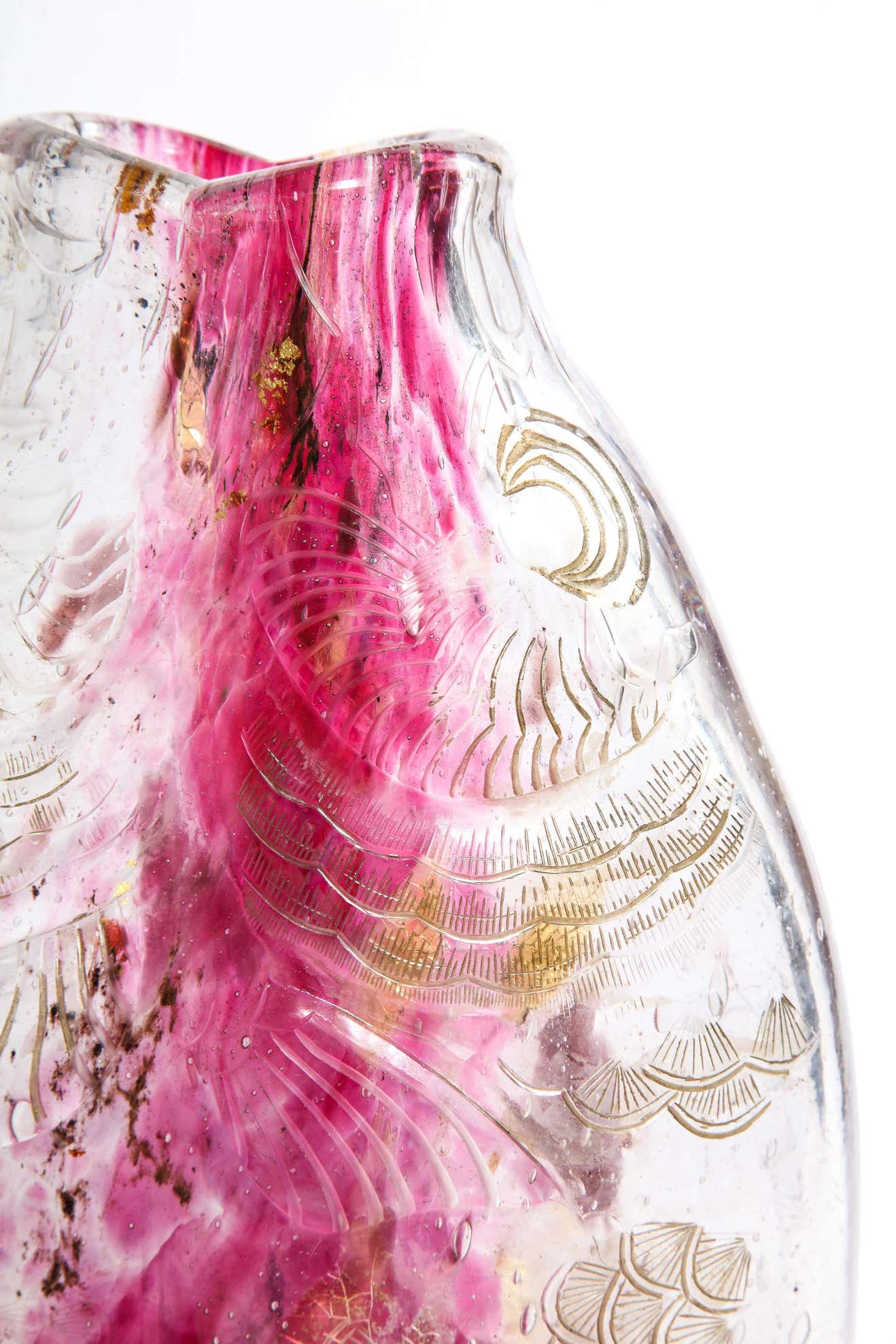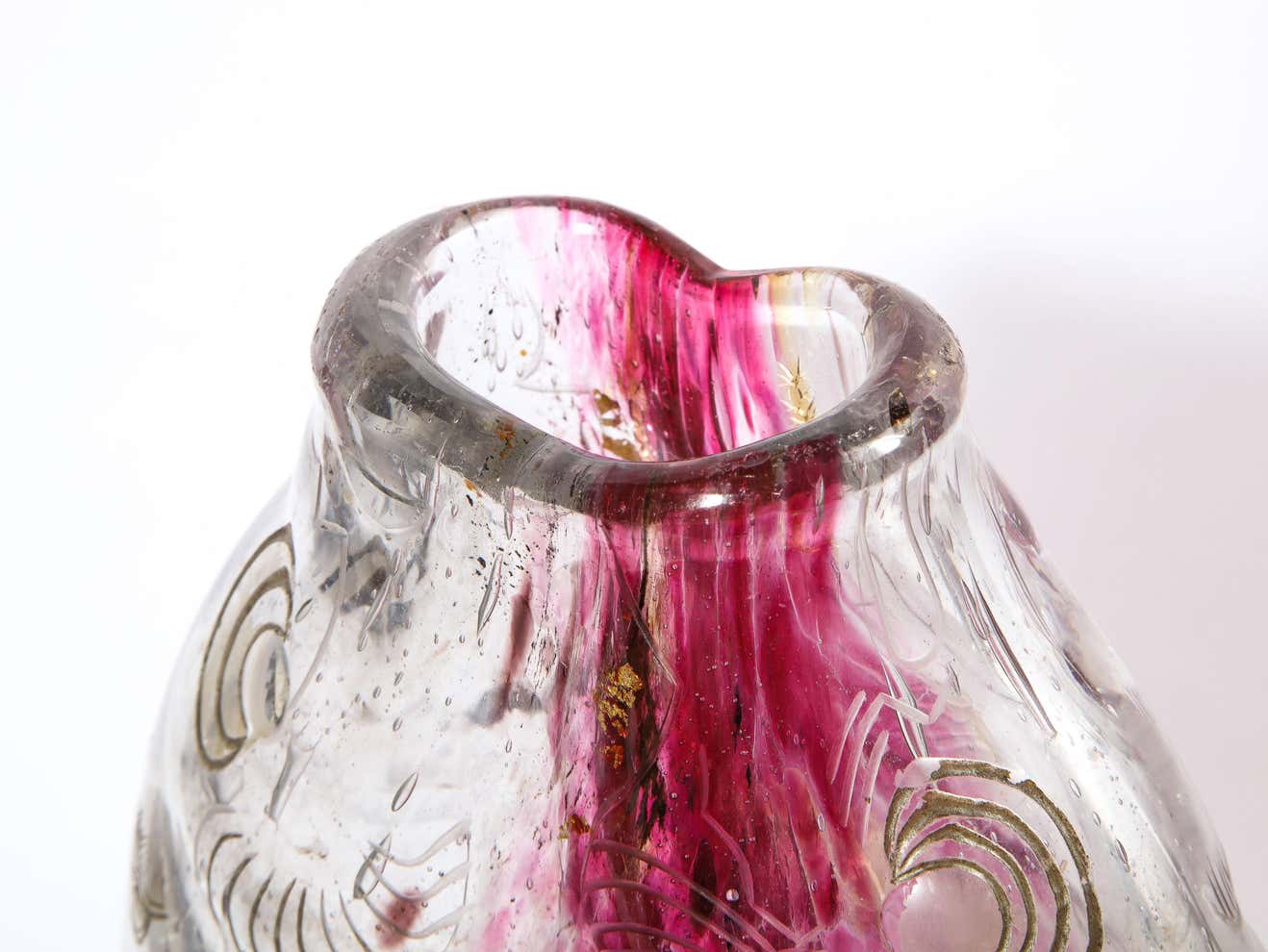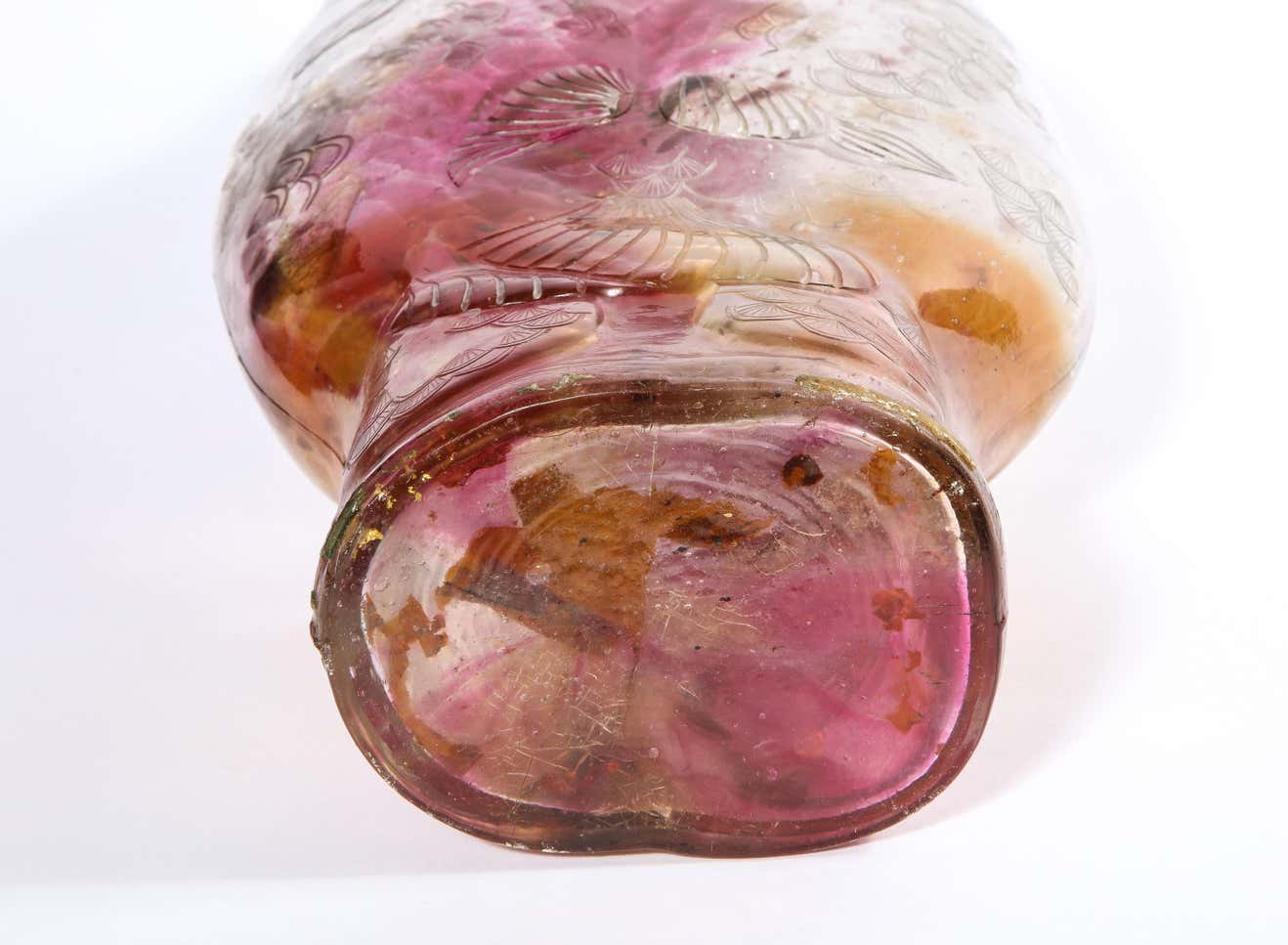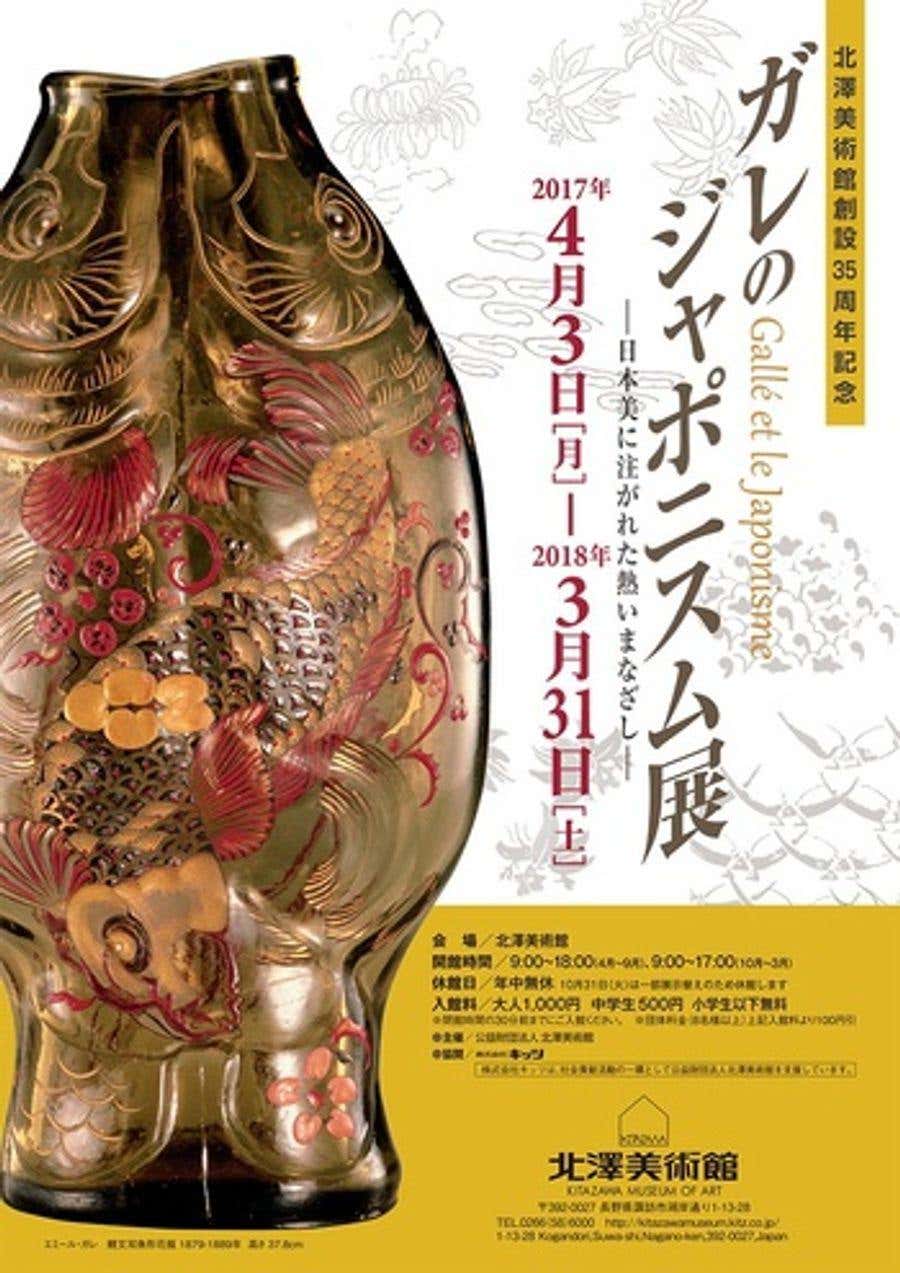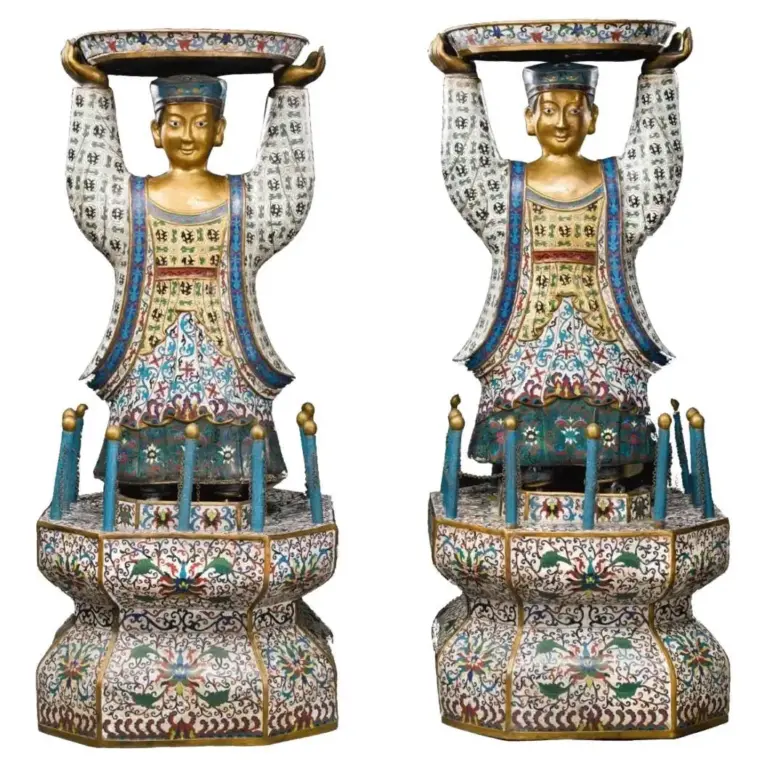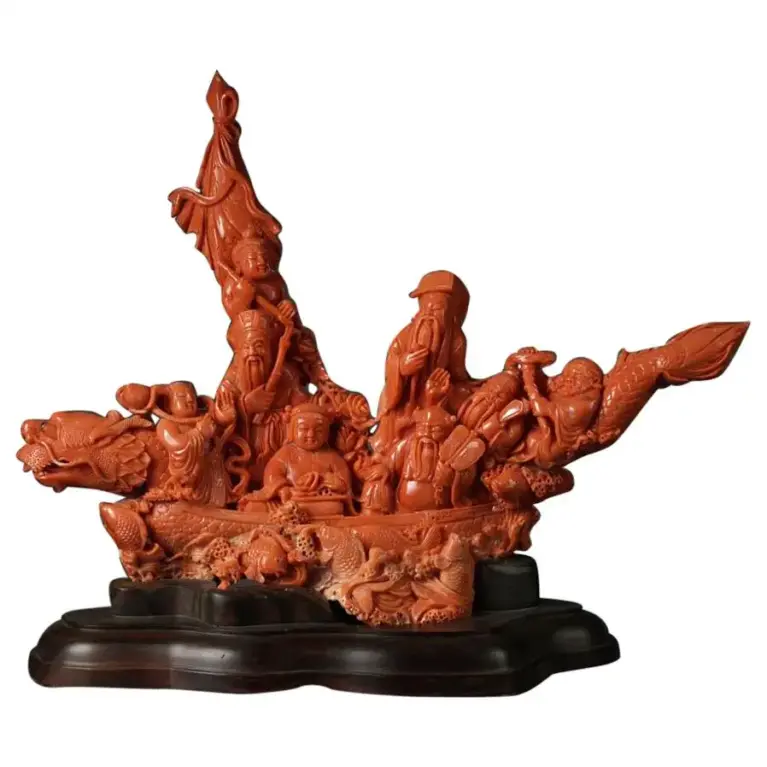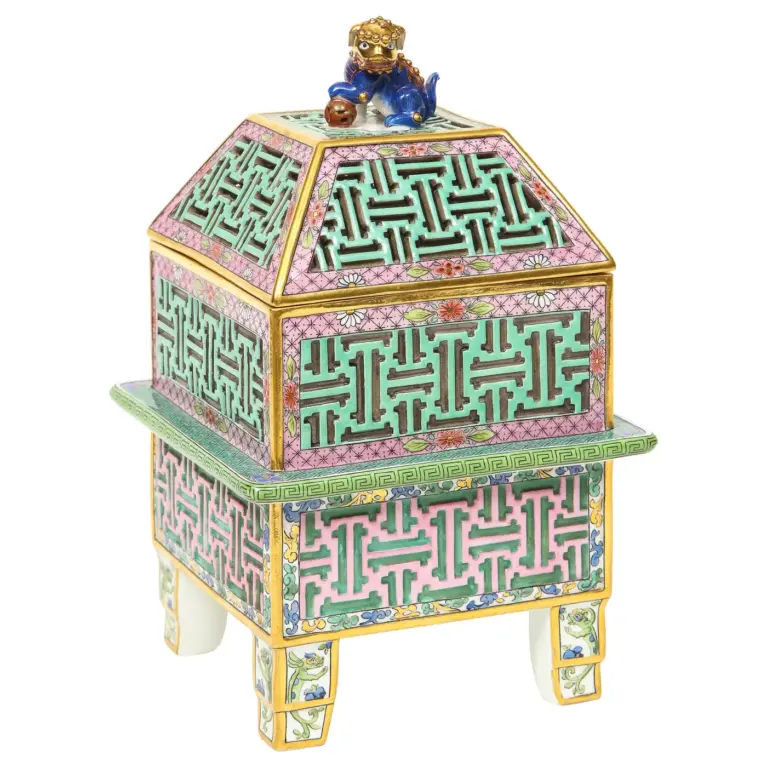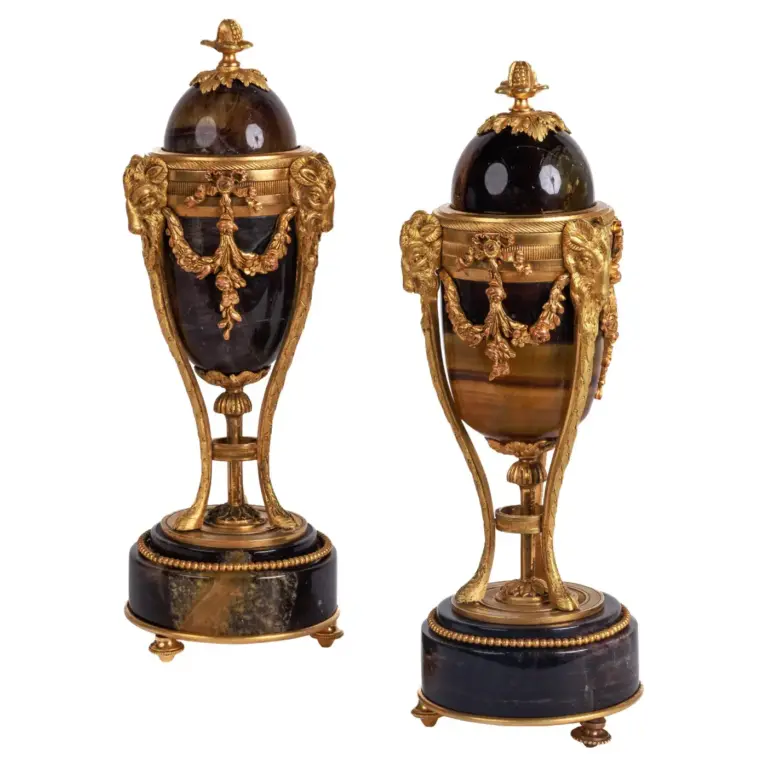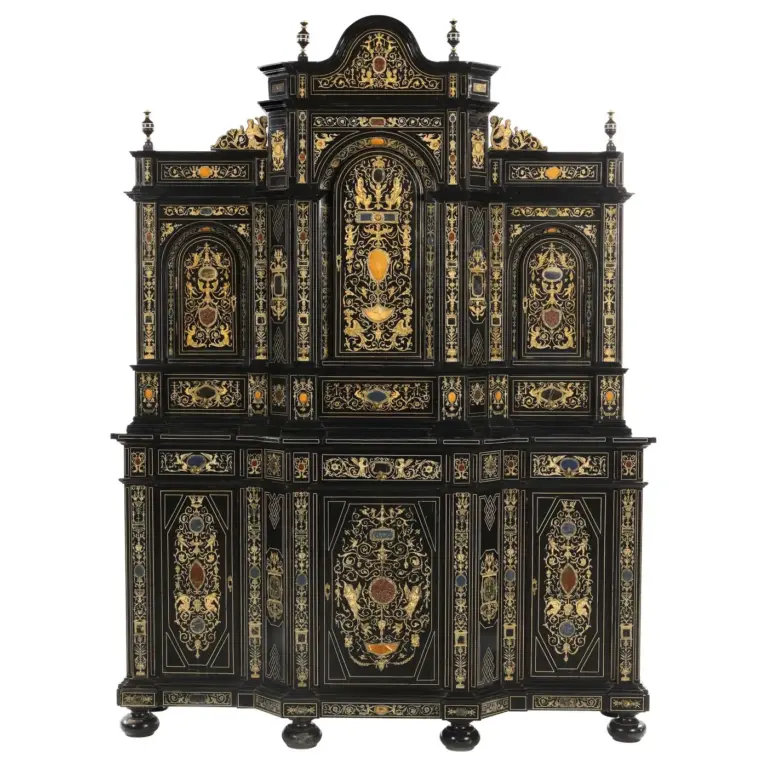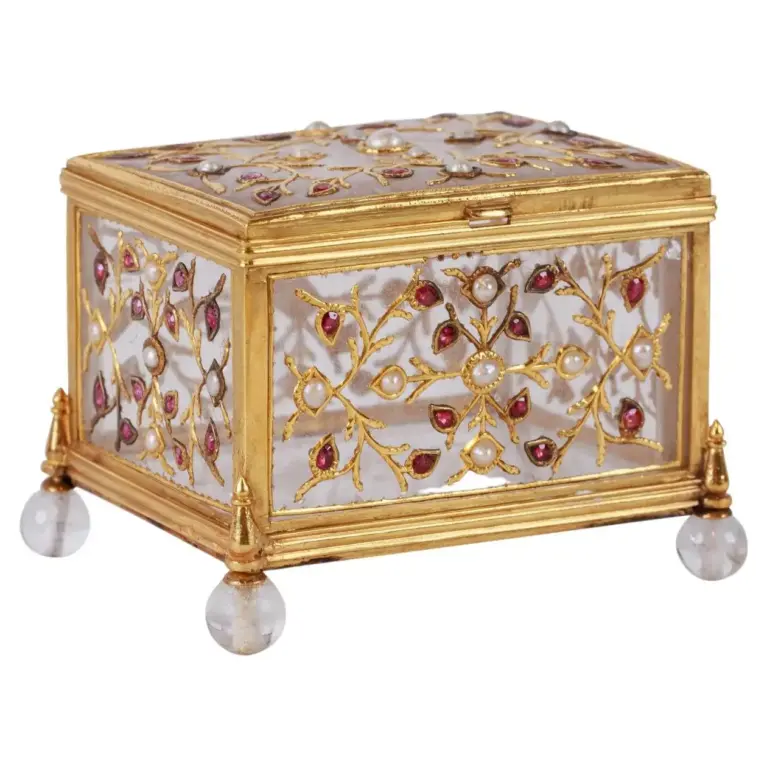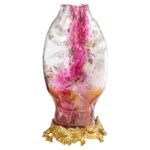Emile Galle, A Rare & Important Ormolu-Mounted Double Carp Fish Pink-Glass Vase
- A rare and important French “Japonisme” Emile Galle Ormolu-Mounted Double Carp Fish Pink-Glass vase, circa 1879.
- One of three ever made.
- A unique and rare true collectors dream.
Product Details
In the glass and ceramic productions in 1875-80’s the ‘Japonisme’ style became successful with the designs of Eugene Rousseau. He did not just copy Japanese shapes and styles, but transformed them into expressive art objects. He was the first to use the simple shape of the double-carp (usually used in Japan, a fortune giving symbol of the union of a pair of lovers, as a ceramic gift on New Year) as a cut and polished crystal vase; one example could be seen in the Duesseldorf ‘Glass Museum Hentrich’ as part of the collection Gerda Koepff. In his glass, he used colored inclusions of minerals, sometimes together with craquele techniques, to produce thick-walled pieces – technically made available by the new methods of steam glass blowing, patented by the company Appert Freres in Clichy, France – having the appearance of semi-precious stones. These luxury objects became visible centers in the living rooms of wealthier people, especially as the original exotic objects were not available on the market.
Under this influence Emile Galle made his own design of a similar double-carp vase in 1879. He mainly used marquetry techniques combined with acid etching to produce economically available products for a larger population. More exquisite products were refined by cutting and application of wonderful enamels in a large number of different styles like Persian, Japanese, and mythological scenes, as well as of botanical objects like flowers or biologicals like fishes, butterflies and many others.
Only a very limited number (possibly only three) of his double-carp vases are known. The example exhibited in the Kitazawa Museum at Suwa, Japan – (shown in photos) – carries the famous enamel of a carp, strongly influenced (actually almost a copy) by the Hokusai woodcut shown in vol. 13 of his ‘Manga’ (sketches). On one hand, this congenial combination of painting with shape is ingenious, on the other side, it seems almost overloaded and the vase is clearly dominated by the enamel, only. In the present vase offered here, the brilliant, jewel like appearance of the crystal glass is eye-catching due to it’s predominantly red mineral-like inclusions – obviously leaned from E. Rousseau’s glass treatments – it is mainly supported by the glass cutting and polishing, enhancing the eyes, fins and scales, thus shaping the contours of the double-carp vase, which is finely contrasted by the Rococo style mount.
Luxury pieces of glass made by Emile Galle, can fetch anywhere from $250,000-500,000. The Kitazawa museum, the same piece with a mount similar to this vase, was sold by Sotheby’s in 2013 for 55,000 € and then, one year later in at an auction in France for more than 150,000 €. Today it would be placed within the top ranking pieces.
16″ high x 9″ wide x 6″ deep.

| Period: | 19th Century |
| Origin: | France |
| Style: | Japonisme (Of the Period) |
| Depth: | 6 in (15.24 cm) |
| Width: | 9 in (22.86 cm) |
| Height: | 16 in (40.64 cm) |
| Creator: | Emile Gallé (Maker) |
| Date of Manufacture: | circa 1879 |
| Materials & Techniques: | Enamel, Glass, Ormolu |

